Cash for Komodo Dragons
BACKGROUND:
The Australian Reptile Park is home to two 8 year old Komodo dragons - Kraken (male) and Daenerys (female). The magnificent pair act as ambassadors for the species to help raise awareness for Komodo dragons in the wild. The Komodo dragon is the world's largest living lizard and can reach an impressive 3m in legth and over 90kg in weight. Komodo dragons live on only a few islands in Indonesia, and are most concentrated on Komodo Island.
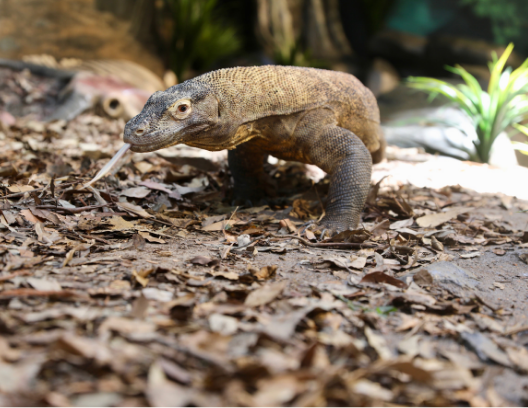
ABOUT THE KOMODO DRAGON:
Currently, the Komodo dragon is listed as "Vulnerable" by the IUCN Red List with numbers estimated to be as low as 6,000 individuals left in the wild. Female Komodo dragons are capable of producing 24 eggs on average each time they lay. A very healthy female can lay up to 38 eggs in one breeding season. Komodo dragons build nests to house their eggs and in an unusual behaviour for lizards, females will guard the nests.
At the end of the wet season (March/April), hatchling Komodo dragons will break open their leathery egg shells and tunnel upwards deep from within their nest to the surface. A key difference in the ecology of hatchling Komodo dragons is that they spend almost all their time for the next year or so living in the canopy of trees. This is a sensible strategy as it means that they do not need to be on the ground where they would make easy prey for larger dragons.
Life in the trees does not last for too long, as after about a year and certainly by the age of about two years, young Komodo dragons have become much more focused on living on the ground. This transition from trees to the land reflects that Komodo dragons are rapidly growing and their dietary requirements are changing and increasing. The diet of Komodo dragons is very related to their body size; as they get larger, they will eat larger prey items.
After reaching 20kg, Komodo dragons start to live primarily on the ground, and will begin to utilise a "wait and ambush" strategy to hunt prey. The Komodo dragon will wait and then rush out of the bushes to bite its prey. Using its venom, the Komodo dragon ambushes its prey, inflicts 1-2 bites and then waits for its prey to die - this process can sometimes take up to a week. For big game such as buffalo, it will be eaten by several Komodo dragons until there is nothing left.
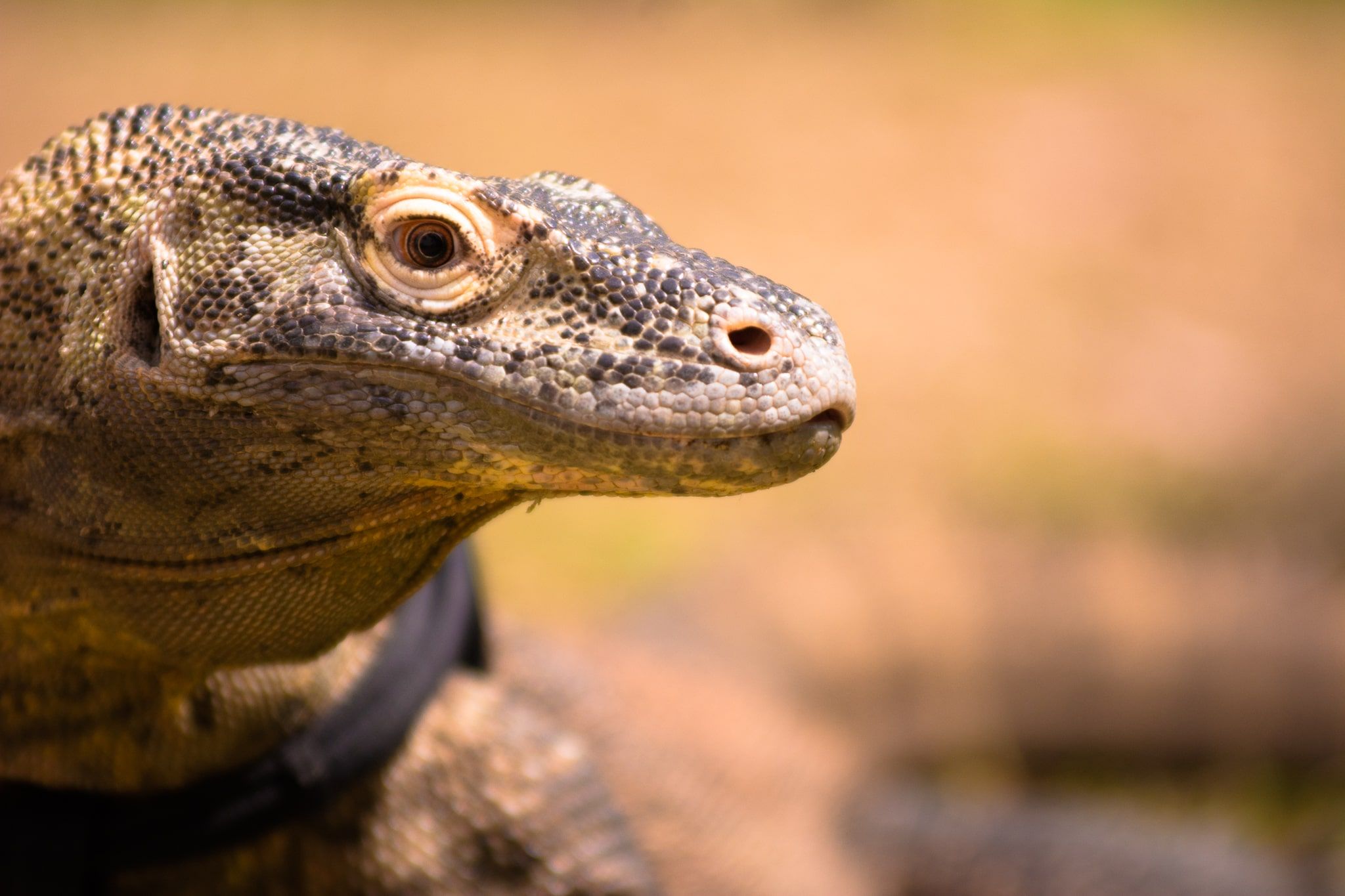
THREATS:
The primary threats to the dragon's survival include illegal hunting and loss of habitat to human settlement.
There is a vital need of island based conservation strategies on managing the Komodo dragon population in their current distribution areas, with consistent research and wild population monitoring being key to the longevity of this species. However, this can be expensive for charities to be able to fund this. Working closely with the on-the-ground researchers, the Komodo Survival Program, the Australian Reptile Park aims to help wild Komodo dragons with the aid of public support!
The Komodo dragons habitat range has disappeared dramatically in recent years and it's urgent we act now before it is too late!
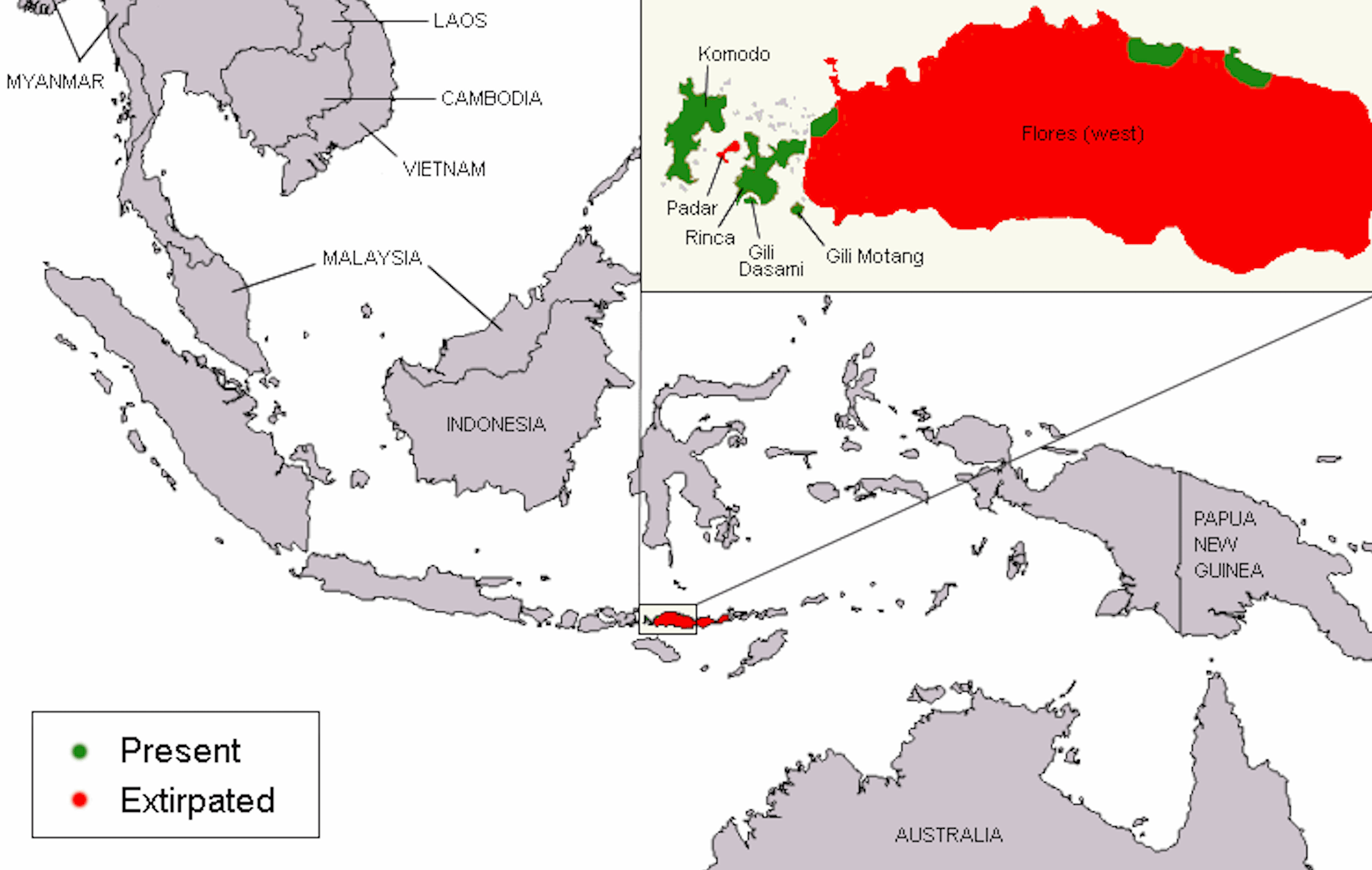
WHAT IS THE KOMODO SURVIVAL PROGRAM?
Komodo Survival Program is an Indonesian-based non-profit organisation established in 2007. The organisation has the mission to provide sound information on wildlife biology to help devising management and conservation plans for the Komodo dragon and its natural habitat.
Thousands of people visit the Australian Reptile Park each year and have fallen in love with Kraken and Daenerys the Komodo dragons. They often ask how they can help the species - this is YOUR time!
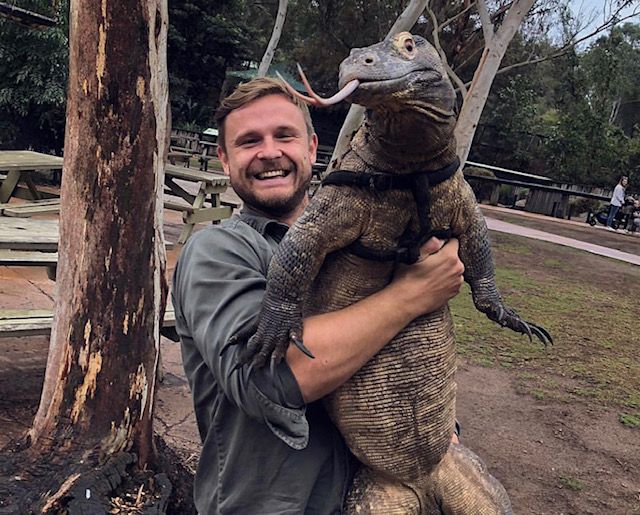
Kraken the Komodo dragon and Zookeeper Dan at The Australian Reptile Park
Budget Overview
HOW YOU CAN HELP:
The Australian Reptile Park is wanting to match dollar-for-dollar up the amount $5,000 with the public to donate to the amazing work the Komodo Survival Program researchers undertake. All of the proceeds from this crowdfunding campaign, plus the Australian Reptile Park's contribution, will go directly to the Komodo Survival Program. Some of the activities that the contributions will go towards include:
- Population monitoring - in-the-field research tracking and monitoring Komodo dragon. Participating in field surveys and documenting wild behaviours, population trends and breeding activities.
- Community awareness - building community awareness through local outreach throughout the Komodo Islands to help educate locals on Komodo dragons, their importance to the native ecosystem how to live side-by-side safely with the species
- School education - visiting local schools in Indonesia and educating the conservationists of tomorrow on the importance of Komodo dragons within their local ecosystem.
- Social research - conducting research on the local human popluation to understand their interactions with Komodo dragons and their feelings/ beliefs towards the species.
Help the Australian Reptile Park contribute towards the wild conterparts of our gorgeous Komodo dragons Kraken and Daenerys...
Don't delay, donate today!
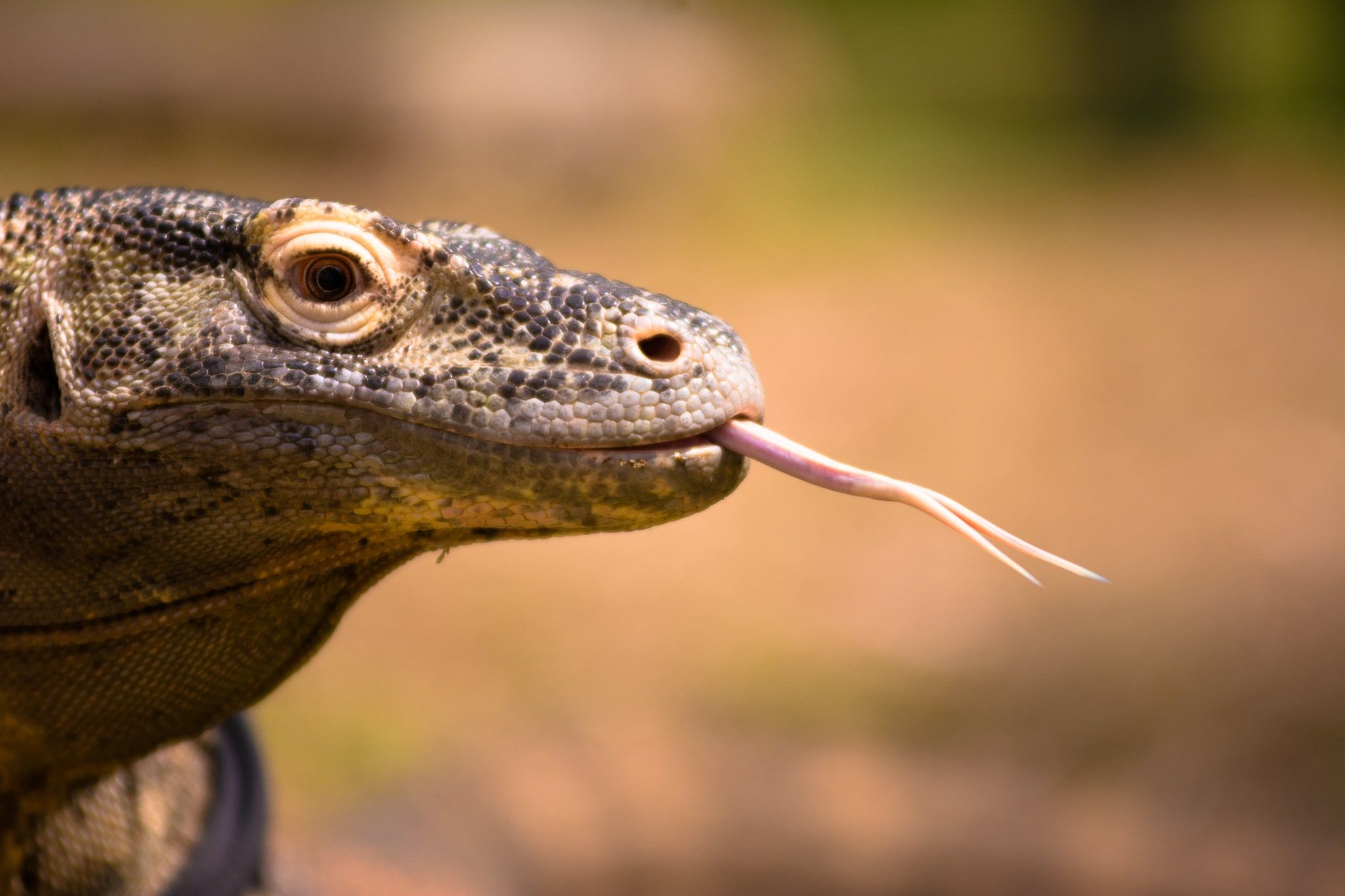
No Reward
I choose to have no reward for my pledge.
Letter of Appreciation and Pen
We will officially say 'thank you' and send you a letter of appreciation and an Australian Reptile Park pen
Certificate of Thanks & Komodo Dragon Magnet
Certificate of Recognition to say Thank You for your support to the Komodo dragon, which you can proudly frame and put on your wall and a wooden Komodo dragon magnet for your fridge!
Komodo Dragon Photo
A gorgeous photograph of Daenerys the Komodo dragon. What better way to show your support than to display this print in your home or office! Note: Sample only, print may vary
Komodo dragon footprint art
Receive an original Art piece made by Kraken the Komodo dragon! (We an assure you that Kraken is not harmed by this, non-toxic paint is used). It puts Van Gogh to shame!
Meet a Komodo dragon at Australian Reptile Park
Experience a personal meet and greet with a Komodo dragon at the Australian Reptile Park! Reward includes entry for you and (up to) 3 guests and a 20 minute Komodo dragon encounter.